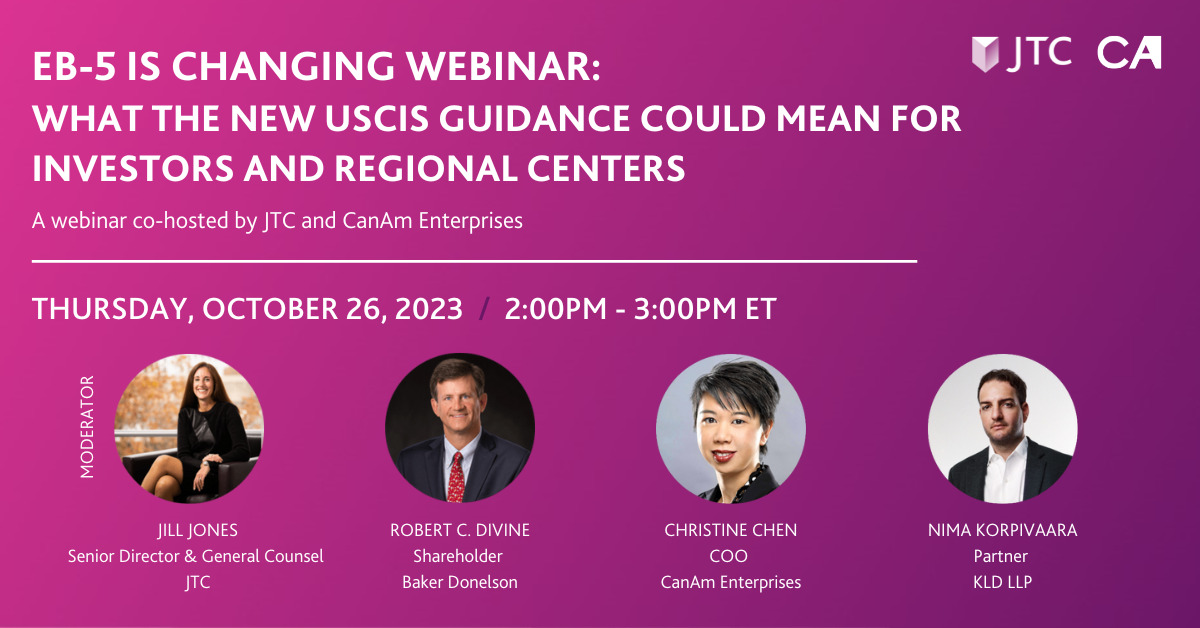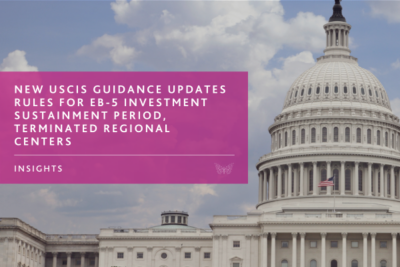 For international students in the United States, the transition from education to employment can be a complex and uncertain process. With visa restrictions, limited job sponsorship opportunities, and the competitive nature of work visas like H-1B, many students seek more secure options for staying in the U.S. long-term. One increasingly popular path is the EB-5 Immigrant Investor Program, which provides a direct route to permanent residency through investment.
For international students in the United States, the transition from education to employment can be a complex and uncertain process. With visa restrictions, limited job sponsorship opportunities, and the competitive nature of work visas like H-1B, many students seek more secure options for staying in the U.S. long-term. One increasingly popular path is the EB-5 Immigrant Investor Program, which provides a direct route to permanent residency through investment.
This article explores how international students can strategically leverage OPT (Optional Practical Training) and EB-5 to secure a green card, ensuring greater career flexibility and stability.
Understanding Post-Graduation Visa Options
Most international students studying in the U.S. are on an F-1 visa, which allows them to remain in the country while completing their degree. However, once they graduate, their visa options become more limited. Let’s explore the most common routes available:
-
Optional Practical Training (OPT)
OPT is a work authorization program that allows F-1 visa holders to work in their field of study for up to 12 months post-graduation. STEM (Science, Technology, Engineering, and Mathematics) graduates can apply for a 24-month extension, allowing them a total of 36 months of work authorization.
However, OPT is temporary, and once it expires, students must transition to another visa category or leave the U.S.
Read More: Transitioning from OPT to EB-5 for International Students
The H-1B visa is a popular option for international graduates seeking long-term employment in the U.S. This visa allows individuals to work for up to six years in a specialized occupation. However, the H-1B process is highly competitive, as visas are allocated through a lottery system, and demand far exceeds the number of available visas each year.
Additionally, H-1B visas tie employees to their employer, meaning job changes can be challenging, and layoffs can put workers in a difficult immigration position.
-
The EB-5 Immigrant Investor Program: A Path to a Green Card
Unlike OPT and H-1B, which have limitations and uncertainties, the EB-5 Immigrant Investor Program provides a direct route to permanent residency. Under this program, foreign nationals can secure a green card by investing at least:
- $800,000 in a Targeted Employment Area (TEA)
- $1,050,000 in a standard project outside a TEA
The investment must create at least 10 full-time U.S. jobs and be structured through a qualifying EB-5 Regional Center or a direct investment business.
Why EB-5 Is a Game-Changer for International Students
For students seeking long-term residency and career freedom in the U.S., EB-5 offers several key advantages:
-
No Employer Sponsorship Required
Unlike the H-1B visa, the EB-5 program does not require employer sponsorship. Students who qualify can apply independently, giving them complete control over their career choices.
-
Work Authorization While Awaiting Green Card
A major reform in 2022—the EB-5 Reform and Integrity Act—introduced concurrent filing. This means that students already in the U.S. can file:
- Form I-526 (EB-5 petition)
- Form I-485 (Adjustment of Status to a Green Card)
Read More: Post-RIA EB-5 I-526E Data Trends: Insights and Implications for Investors and Stakeholders
At the same time, they can apply for work authorization (EAD) and travel parole, allowing them to live, work, and travel while their green card application is pending.
-
Faster Path to Permanent Residency
- Unlike the H-1B visa, which requires years of work before applying for a green card, EB-5 investors can obtain permanent residency in a more predictable timeframe.
- Once the I-526 petition is approved, the investor receives a conditional green card for two years.
- After two years, investors file an I-829 petition to remove conditions, proving that the required jobs have been created.
- Once approved, the investor and their family receive permanent green cards, allowing them to live and work anywhere in the U.S.
-
Family Benefits
-
- EB-5 investors can include spouses and children under 21 in their green card application.
- Children can qualify for in-state tuition at public universities, reducing education costs significantly.
- After five years, green card holders can apply for U.S. citizenship.
Transitioning from OPT to EB-5: Timing Is Everything
For students nearing the end of their OPT period, timing is critical in making a smooth transition to EB-5. Here’s a strategic approach:
Step 1: Begin EB-5 Investment While on OPT
-
-
- Since OPT provides temporary work authorization, students should start the EB-5 process early—ideally at least a year before OPT expires.
- This ensures continuous work authorization, as waiting too long could create employment gaps.
-
Step 2: File I-526 and Concurrent Adjustment of Status
-
-
- Students who file I-526 (EB-5 petition) and I-485 (Adjustment of Status) while still on OPT can secure a new Employment Authorization Document (EAD).
- This new EAD allows them to continue working while their green card is being processed.
-
Step 3: Maintain Work Authorization
-
-
- EAD processing takes approximately 4-7 months, so early filing is key.
- If students transition seamlessly from OPT to EB-5, they can remain employed without interruption.
-
Step 4: Travel and Immigration Flexibility
-
-
- Filing Adjustment of Status also provides travel parole, meaning students can travel internationally while waiting for their green card.
-
Final Thoughts: Is EB-5 Right for You?
For international students, the EB-5 program offers a secure and predictable pathway to U.S. residency without relying on employer sponsorship. By planning ahead and utilizing OPT strategically, students can maintain work authorization while awaiting their green card approval.
Who Should Consider EB-5?
-
-
- Students who do not want to rely on the H-1B lottery.
- Families who are willing to make a financial investment for long-term security.
- Individuals seeking career flexibility without employer restrictions.
- Graduates looking for a direct path to U.S. citizenship.
-
Conclusion
Navigating the post-graduation visa landscape can be daunting, but with proper planning, international students can leverage OPT and EB-5 for a seamless transition to a green card. By investing in the U.S. economy, students can secure their future, eliminate visa uncertainties, and gain the freedom to build their careers on their own terms.
If you are considering EB-5, now is the time to explore your options and start the process before your OPT expires. With recent policy changes, the program has never been more accessible for students looking to invest in their future and stay in the U.S. long-term.




